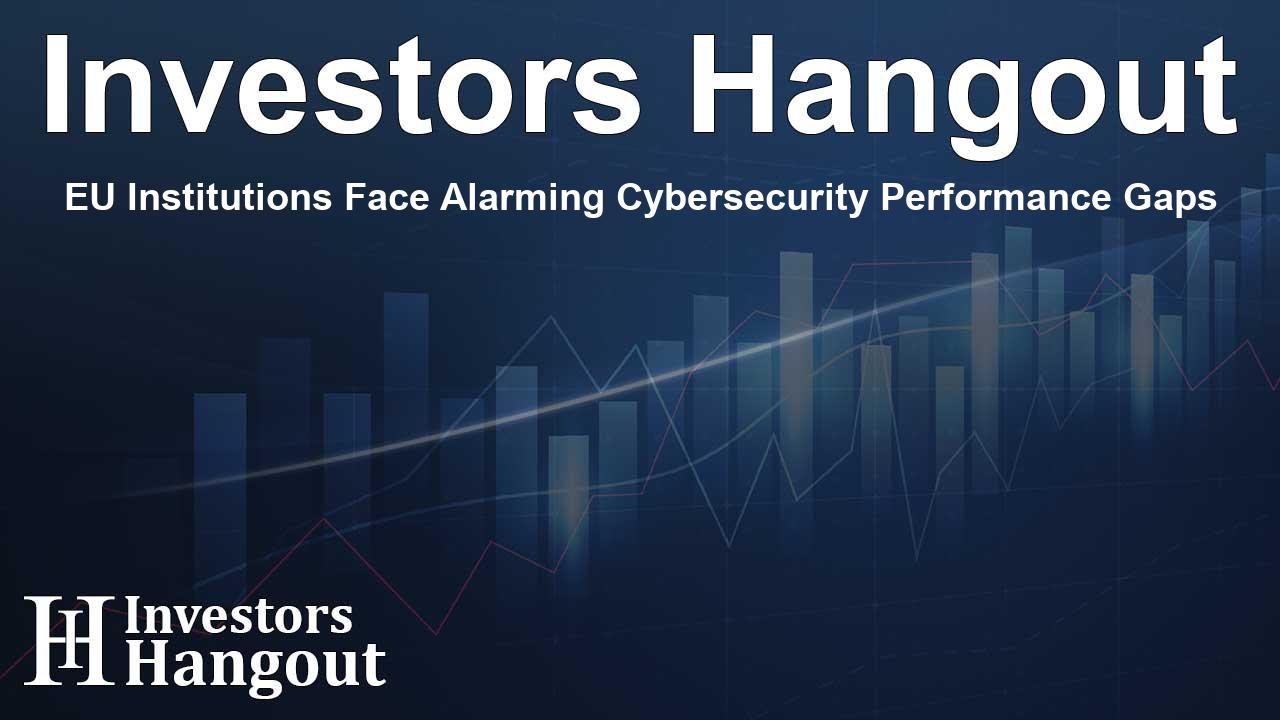EU Institutions Face Alarming Cybersecurity Performance Gaps

EU Institutions' Cybersecurity Performance Under Scrutiny
85% of employees reuse breached passwords among EU institutions rated lowest for cybersecurity.
Recent initiatives by the European Commission aimed to enhance cyber resilience and legislation focused on strengthening cybersecurity across the European Union remains a priority. However, numerous concerns have surfaced regarding the overall preparedness of EU institutions to combat cyber threats.
A comprehensive evaluation from the European Court of Auditors highlighted that the level of cybersecurity among European Union institutions, bodies, and agencies (EUIBAs) was significantly lacking in relation to the threats they face. The report emphasized the urgent need for action to bolster cybersecurity measures across all affected entities and suggested increased funding to support these efforts.
In light of the ongoing challenges, recent analyses conducted by the Business Digital Index, which is powered by Cybernews, indicates that the European Union still grapples with securing its systems against cyberattacks. A staggering 67% of the institutions analyzed received a D or F rating, which signifies the lowest possible cybersecurity grade. Alarmingly, every institution examined had previously experienced data breaches, and 85% of employees in these low-performing organizations were found to be reusing passwords that had already been compromised.
Basic Cyber Hygiene Lacking in EU Institutions
The Business Digital Index team evaluated the cybersecurity postures of 75 EU governmental institutions' websites, revealing troubling results. Approximately one-third of these institutions were rated with a C score, indicating below-average security levels. Meanwhile, 32% received a troubling D score, categorizing them as high-risk, while a striking 35% were rated with an F score, placing them in a critical risk category. Notably, none achieved an A or B rating at all.
The average score across the EUIBA was 71 out of 100, which falls into the high-risk range of 70-79. Organizations within this scoring bracket represent significant vulnerabilities to cyberattacks despite having some basic security measures in place. The current state of cybersecurity among EU organizations is alarming and demands immediate attention to avert potential breaches that could jeopardize sensitive institutional and personal data.
High Incidence of Data Breaches Among Low-Scoring Institutions
Institutions with subpar cybersecurity scores seem to be facing the brunt of the issue. An astounding 96% of F-rated and 92% of D-rated entities reported suffering at least one data breach, in stark contrast to only 36% of those rated C. Nearly half (46%) of all F-rated institutions in the study had dealt with a recent data breach, while 17% of D-rated organizations reported similar issues. Impressively, the C-rated institutions had not encountered any breaches, highlighting the direct correlation between poor cybersecurity hygiene and the frequency of breaches.
One prominent indicator of insecure practices is the prevalence of password reuse. For F-rated institutions, a staggering 85% of employees were found to be reusing compromised credentials. Among D-rated entities, 71% reported similar habits, while only 8% of personnel in C-rated institutions engaged in this risky behavior. Such patterns illustrate how continuous negligence in lower-scoring organizations is creating predictable vulnerabilities that compromise data security.
Technical Vulnerabilities Plaguing Low-Scoring Institutions
The research data reveals a clear correlation between cybersecurity scores and technical vulnerabilities within critical systems. SSL/TLS configuration issues were discovered in 100% of F-rated institutions, 92% of D-rated, and notably, 100% of C-rated entities, leaving them susceptible to various cyber threats. Furthermore, insecure hosting conditions were found in 92% of D-rated and F-rated organizations, reflecting ineffective management of hosting environments.
Issues related to email spoofing were equally alarming, as they were identified in every C-rated organization and in 96% of D-rated and F-rated entities, posing risks of impersonation tactics. Additionally, exposed corporate credentials were noted in 96% of F-rated institutions and 83% of D-rated organizations, while only 12% of C-rated entities had leaked credentials, showcasing significant disparities in basic security practices.
Understanding the Methodology Behind the Findings
This analysis stems from the innovative approach undertaken by the Business Digital Index (BDI) research team, employing the BDI framework to thoroughly evaluate publicly available information. Through custom scanning techniques, IoT search engines, and a multitude of databases, the team conducted an extensive assessment of the cybersecurity hygiene of the 75 European Union institutions, bodies, and agencies (EUIBA).
The evaluation focused on cybersecurity risk across seven key dimensions including software patching, web application security, email protection, system reputation, hosting infrastructure, SSL/TLS configuration, and historical data breaches. A detailed methodology pertaining to the research is available through their official resources.
Conclusion and Call to Action
The insights garnered from this analysis center on the crucial need for EU institutions to reaffirm their commitment to adopting robust cybersecurity measures. As the digital landscape grows increasingly complex and fraught with risks, an immediate and comprehensive focus on cybersecurity hygiene is essential to protect sensitive data and maintain public trust.
Frequently Asked Questions
1. What prompted the recent evaluation of EU institutions' cybersecurity?
The evaluation stemmed from rising concerns regarding the preparedness of EU institutions to combat growing cyber threats, prompting a focused analysis by the Business Digital Index.
2. What were the key findings regarding password reuse?
The analysis revealed that 85% of employees at F-rated institutions reuse compromised passwords, indicating a substantial risk to organizational security.
3. How do cybersecurity ratings correlate with breaches?
There is a direct correlation where institutions with lower scores, like D and F ratings, face higher incidents of data breaches compared to higher-rated organizations.
4. What vulnerabilities exist in low-scoring institutions?
Low-scoring institutions often suffer from critical vulnerabilities, including issues with SSL/TLS configurations, insecure hosting environments, and exposed corporate credentials.
5. What steps can be taken to improve cybersecurity in EU institutions?
Immediate actions include conducting comprehensive security audits, enhancing employee education on cybersecurity best practices, and fortifying existing security measures.
About The Author
Contact Ryan Hughes privately here. Or send an email with ATTN: Ryan Hughes as the subject to contact@investorshangout.com.
About Investors Hangout
Investors Hangout is a leading online stock forum for financial discussion and learning, offering a wide range of free tools and resources. It draws in traders of all levels, who exchange market knowledge, investigate trading tactics, and keep an eye on industry developments in real time. Featuring financial articles, stock message boards, quotes, charts, company profiles, and live news updates. Through cooperative learning and a wealth of informational resources, it helps users from novices creating their first portfolios to experts honing their techniques. Join Investors Hangout today: https://investorshangout.com/
The content of this article is based on factual, publicly available information and does not represent legal, financial, or investment advice. Investors Hangout does not offer financial advice, and the author is not a licensed financial advisor. Consult a qualified advisor before making any financial or investment decisions based on this article. This article should not be considered advice to purchase, sell, or hold any securities or other investments. If any of the material provided here is inaccurate, please contact us for corrections.
